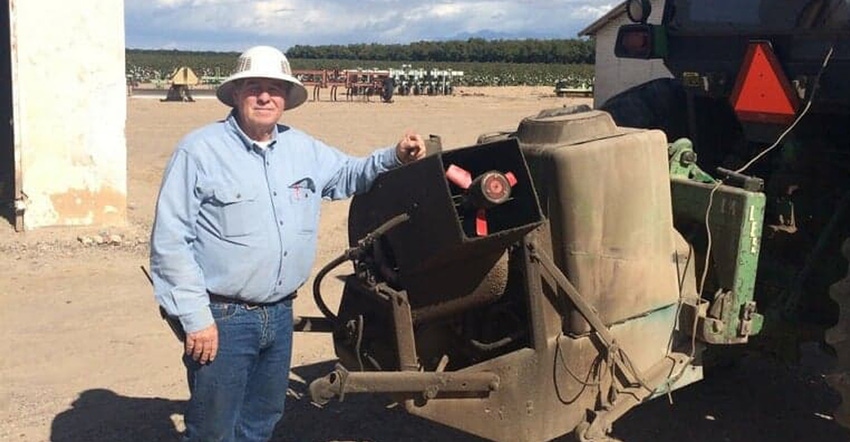
After a lifetime of fighting the pink bollworm, a New Mexico grower welcomes the nationwide eradication announcement by Secretary of Agriculture Sonny Perdue in Washington D.C., Oct. 19.
“I've fought pinkies my whole life -- I grew up fighting them and they were a real challenge,” says veteran farmer Keith Deputy, and vice chairman of the South Central New Mexico Pink Bollworm Committee.
“You just never knew when they would hit and because they were inside the bolls, you never knew when they were going to take out your crop, unless you were cutting a lot of bolls open and monitoring.”
In the “early days,” Deputy says they didn’t have a way to monitor the worms. It wasn’t until the late 1970s, when his county received a new extension agent, that they began to set traps which enabled him and area growers to monitor pink bollworm numbers.
“They always went up in July and that's when we started getting the infestations, just as bolls started developing,” Deputy recalls.
See, Pink bollworm eradication: ‘big milestone’
It was discovered by Hudspeth County, Texas, grower Jim Ed Miller and El Paso Extension Agent Phil Glagoza, in the evening, female moths would fly up out of the cotton canopy and call the males. “So, we developed a plan and began going out at 9:00 at night and spraying an insecticide with pheromone and cottonseed oil. We sprayed it when the wind was blowing in the evening up over the canopy of the cotton,” says Deputy, who set a trap every 50 acres on his 2,000 acres of Pima cotton.
He says area growers invested in mist blowers, and though the treatment was “fairly cheap,” about 70 cents an acre, it took multiple applications throughout the season, from 9:00 p.m. to 12 a.m., to keep the pinkies at bay.
“I would call my neighbors and say, ‘Hey, the moth count is up, let’s go spray tonight,’ and we would all spray at the same time. It worked relatively well, but you had to drive the tractor from 9:00 to midnight, every other week. It sounds terrible. But it wasn't all that bad,” says Deputy.
The New Mexico farmer, who farms on the north side of El Paso and Chamberino, N.M., says the pink bollworms were worse on the south end, closer to the city of El Paso, where there were more acres of Pima cotton planted.
About the same time, Texas began its pink bollworm eradication program, Deputy says, New Mexico joined in. He says, while South Central New Mexico Pink Bollworm Committee eradication approach was a little different, both states used pheromone spray and sterile moths to eradicate the pink pest.
When asked what it meant to him to hear the announcement about the pink bollworm, he says, “What a difference in my life for me personally, going from putting out pinky traps every year in July and then reading those traps at least twice a week. No one knew when the population was going up or when it was going down and if we sprayed, if we had made a difference.”
Today, with late crops and short seasons, if they had not eradicated pinkies, they would've eaten the cotton up, he says. “It’s quite the change to be able to harvest all of the bolls instead of having a bunch of them eaten up.”
About the Author(s)
You May Also Like






